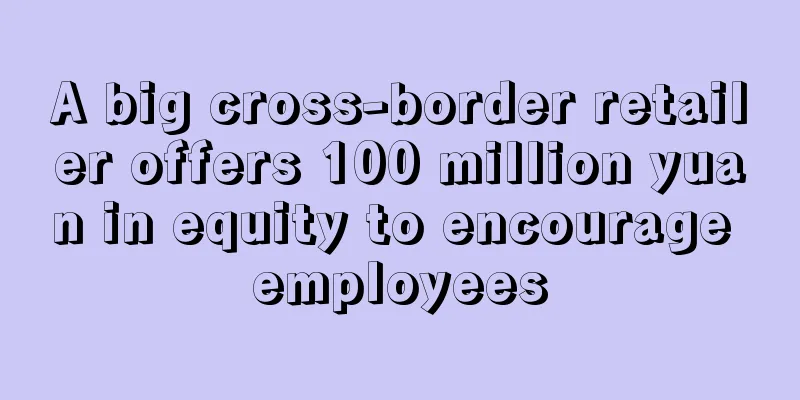21-year-old guy earns millions a year! Cross-border e-commerce is popular in the "slums"

|
Annual income of one million! Cross-border e-commerce is popular in the slums
Cross-border e-commerce is so popular!
After experiencing account suspension, internal competition, and the epidemic, many cross-border sellers have gradually returned to rationality and started to concentrate on polishing products and researching blue ocean markets. As far as the blue ocean market is concerned, Latin America may be a good fertile ground for gold mining. Previously, SHEIN made a net profit of 400 million US dollars in Brazil, and then Jitu Express operated in Mexico. Now there is a 21-year-old guy who earns a million dollars a year in the slums of Brazil. It is a complete novel shining into reality...
Monthly income of 250,000! 21-year-old boy makes money in Brazilian cross-border e-commerce
Recently, a CCTV news report that "a 21-year-old boy in Sao Paulo, Brazil, turned out to be a real-life slum millionaire" attracted the attention of many people in the industry.
It is understood that the 21-year-old Pereira lives in the largest slum in Sao Paulo, Brazil, with a population of about 100,000. The traffic in the area is complicated, and illegal construction is everywhere, so that many express delivery companies, including the Brazilian Post Office, are reluctant to carry out delivery business here. It is precisely in this environment that this Brazilian young man keenly discovered the business opportunity and created a courier company that specializes in serving residents in slums.
Although the express delivery company was founded less than a year ago, Pereira 's company has made considerable profits and successfully boosted employment in the slums. Currently, Pereira 's express delivery company has more than 300 employees , covering seven slums in Brazil, delivering nearly 2,000 parcels every day , and earning about 250,000 yuan a month, which is about one million yuan a year.
In fact, as early as 2019, the consumption capacity of the slum where Pereira lives has exceeded 9 billion yuan. Under the epidemic in 2020, the demand for online shopping among Brazilian consumers has continued to grow. 13% of Brazilians have tried online shopping, and the slums with strong consumption capacity are no exception.
Pereira said that in the future, he plans to raise funds through equity crowdfunding. It is expected that the company's business will be expanded to 50 slums by 2023, and 1,500 jobs will be created for slum residents. The business will even be expanded to other countries in Latin America in the future.
The young man's gold-digging incident in the slums also indirectly confirms a fact that the difficult environment such as the epidemic and war has not affected the development of the cross-border e-commerce industry. Instead, it has become the "gravity rope" for the development of cross-border e-commerce in the region . The market potential of cross-border e-commerce in Latin America and other regions also needs to be developed.
Not only that, there are also constant reports that major cross-border e-commerce companies and platforms are planning to enter the Latin American market.
Chinese cross-border fast fashion brand SHEIN has earned about 400 million US dollars in Brazil and is actively looking for suppliers ; Kuaishou has launched Kuai Shop stores in Brazil ; Shopee has built a large local logistics operation warehouse in Sao Paulo, Brazil; Jitu Express recently announced its official entry into the Latin American market; Urbanic and other independent e-commerce companies are also expanding to parts of Latin America...
Under this situation, many sellers are also paying attention to the cross-border e-commerce market in Latin America, in order to choose the right opportunity to enter. However, for sellers, if they want to enter the Latin American market, they also need to have certain considerations on the local e-commerce platforms.
It is understood that the economic development in Latin America is relatively unbalanced, so the distribution of e-commerce platforms is also uneven. Among the top ten e-commerce platforms in the region, six are local platforms from Brazil , such as Americanas, CasasBahia, Submarino, etc.
However, the mainstream e-commerce platform in the Latin American market is Meikeduo , which was founded in Uruguay , with a monthly traffic of 642 million, far ahead of the second-ranked Americanas (134 million) and the third-ranked Amazon (119 million). The platforms frequently visited by Latin American consumers are Meikeduo's Brazilian and Argentinian sites, Americanas' Brazilian site, Meikeduo's Mexican site, and Amazon's Brazilian site.
A beauty seller sells 30,000 pieces a day ! The popularity of many categories of products continues to rise
Today, Latin America is attracting the attention of many sellers with its impressive data and huge potential.
Data shows that in 2021, Latin America's e-commerce sales reached $115 billion, making it one of the fastest growing regions in the global e-commerce market. In this emerging market with more than 200 million online shoppers and growing purchasing power year by year, Brazil has become the first "fortress" for some cross-border sellers to enter Latin America, with 7 out of every 10 consumers having purchased goods from China online.
According to relevant data, Brazil accounts for 42% of the Latin American e-commerce market . In January this year, Brazil's online sales increased by 20.56% compared with the same period last year , and showed an upward trend compared with the data in December last year . Among the many categories, office supplies and communication equipment furniture, books and stationery, perfumes and cosmetics are the best-selling products, among which the sales of perfumes and cosmetics accounted for 7%.
According to Statista, the number of online shoppers in Brazil will grow to 138 million in 2025, and ARPU will continue to rise, and is expected to reach US$228.1 in 2025. In this market with unlimited potential, cross-border sellers are faced with unlimited business opportunities...
"Brazilians prefer bolder makeup styles, which is influenced by European and American culture," said a domestic beauty seller when talking about his years of operating experience in the Brazilian market. Since consumers prefer dark base makeup and color makeup products, he seized the opportunity to make nude and dark lip glazes the best-selling products in the store, achieving a good result of 30,000 pieces in daily sales . The product also entered the list of best-selling items in the Brazilian market.
In fact, beauty and cosmetics products are absolutely indispensable for local consumers, especially female consumers. In Brazil, women consider bold and exaggerated makeup as beauty, so bright and colorful eye shadows, lip glosses or lipsticks are the favorites of every beauty-conscious woman.
Google Trends search for "cosmetics" in Brazil shows that it has remained high over the past 12 months. This is enough to show that Brazilian female consumers have maintained a high demand for cosmetics throughout the year. In addition, when searching for the word " Lipstick ", it can also be found that the popularity has remained stable and high.
In addition to cosmetics, consumer electronics are also popular in Latin America, especially in Brazil. However, unlike the consumption habits of consumers in the European and American markets, consumers in this region prefer such products with high quality and low prices. Interested sellers should note that the competition for such products with low unit prices in this region is fierce, so they can consider their own brands or brand authorization.
Based on the sales data of the Brazilian e-commerce market in recent years, the popularity of beauty and cosmetics and consumer electronics products has remained at a high level. In addition, based on the experience of many sellers in this market, the sales of mobile phone accessories, clothing, home life, and fashion accessories in Brazil have performed well. Recently, the popularity of some products including watches, glasses, women's shorts, and Easter-related holiday products has increased , and sellers can pay more attention to them.
In fact, the shopping preferences of Brazilian consumers are not limited to this, and there are still some potential products waiting for sellers to discover. But it is worth noting that compared with other markets, the current logistics situation in the Brazilian market is relatively special. Sellers who intend to layout need to do enough homework in advance and do not fight unprepared battles. Cross-border e-commerce Latin America Brazil |
<<: USPS to offer new connectivity service for online marketplace
>>: Shopee Vietnam site payment cycle changed to once a week
Recommend
What is Baosight Global? Baosight Global Review, Features
Baosight Global was founded in 2012 and has been c...
Another children's toy sold on Amazon has been recalled due to choking hazard
Safety incidents caused by children's toys ar...
What is Domi? Domi Review, Features
DOMi is a cross-border e-commerce service brand l...
Breaking the record! Russian Black Friday online shopping sales reached 85.7 billion rubles
As the Black Friday war came to an end, the Black...
What is GAMPRO? GAMPRO Review, Features
GAMPRO AUTO PARTS is focused on providing the best...
What is DirectPay? DirectPay Review, Features
DirectPay is a full-service credit management age...
Shenzhen Power! More than 10 brands have gained fans overseas and their layout in the market has been exposed
Not long ago, the Shenzhen Municipal Bureau of Co...
What is Vacation Mode? Vacation Mode Review, Features
Holiday mode is a function developed by major e-c...
Profits increased more than 20 times! Amazon's big brand sprints for IPO at the beginning of the year
Nowadays, with the continuous iteration and upgra...
Walmart's e-commerce and advertising revenue growth surpassed Amazon in the second quarter
According to foreign media reports, compared with...
OnBuy Partners with Blue Media Services to Improve Advertising Quality
As the leading e-commerce platform in the UK, OnB...
What is zonesun? zonesun Review, Features
zonesun is a modern high-tech enterprise establish...
What is SKULabs? SKULabs Review, Features
<span data-docs-delta="[[20,{"gallery"...
After distributing 800 million yuan in dividends, Huadong IPO was terminated
The company made a profit of more than 400 millio...
Amazon requires employees to go to the office three days a week, and they say: I don’t want to do this anymore!
It is understood that Amazon employees are very d...









